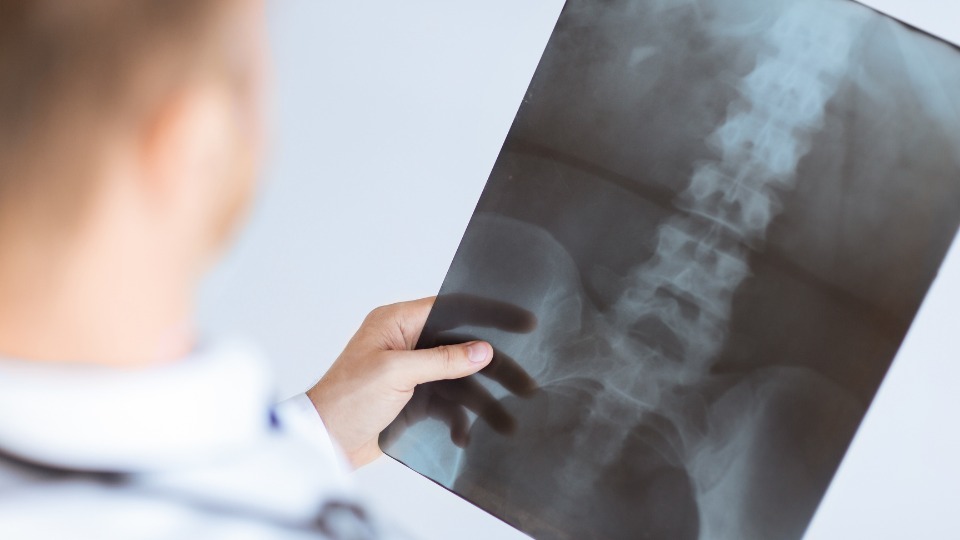Are you dealing with persistent back pain that is making your life unbearable? Unfortunately, because of the complexity of our musculoskeletal anatomy, it can oftentimes be difficult to pinpoint exactly what type of back pain you are experiencing. In this blog post, we will discuss different types of back pain, potential sources for each type of condition and provide an overview on potential treatments – all from a physician’s point-of-view. Let’s try and figure out the source behind your discomfort and put together a plan to help ease or even get rid of the discomfort so that you can start enjoying life again!
As a general rule, back pain can be classified in many ways depending on its cause, location, duration, and other characteristics. It can stem from an injury or certain medical conditions such as sciatica, degenerative disc disease, spinal stenosis, herniated discs, and spondylolisthesis. It can also be acute (short-term) or chronic (long-term).
As a chiropractor and ergonomist with 30+ years of experience, I’ve authored a book on posture, appeared on national television, and developed innovative solutions to enhance sitting comfort. My most recent project, a series of ergonomic seat cushions, was successfully launched through Kickstarter. Rely on my expertise and let me guide you through some fantastic options to reduce your back pain.
Identifying Different Types of Back Pain
As a chiropractor, I often see patients who are struggling to determine the source and type of their back pain. There are various types of back pain, and identifying the correct one is crucial to finding the most effective treatment. Some common types include muscle strain, disc problems, and spinal stenosis, among others. It’s important to remember that each case is unique, and a thorough examination is necessary to pinpoint the exact cause of your discomfort.
Muscle Strain or Sprain
Muscle strains and sprains are common causes of back pain, typically resulting from overexertion, improper lifting techniques, or sudden movements. This type of pain often feels like a sharp, localized ache or a general stiffness in the affected area. Rest, ice, and over-the-counter pain relievers can help alleviate the discomfort, but if the pain persists, it’s essential to consult a chiropractor or healthcare professional for further evaluation.
Disc Problems
Intervertebral discs act as cushions between the vertebrae in your spine. When these discs become damaged, herniated, or bulging, they can press on nerves and cause significant pain. Disc-related pain can manifest as a dull ache, sharp shooting pain, or even numbness and tingling in the extremities. Treatment for disc issues varies depending on the severity of the problem and may include chiropractic adjustments, physical therapy, or, in severe cases, surgery.
Spinal Stenosis
I’ve written a complete hands-on review about the best sitting position for sciatica, and here is what I tested best with my sciatica patients.
Spinal stenosis occurs when the spaces within the spinal canal narrow, putting pressure on the nerves that run through it. This condition can cause pain, numbness, or weakness in the back, as well as the arms or legs. Spinal stenosis is often associated with aging and degenerative changes in the spine. Treatment may involve chiropractic care, exercise programs, medication, or, in more severe cases, surgery.
Facet Joint Syndrome
Facet joints are small joints located between each pair of vertebrae in the spine, allowing for flexibility and movement. Facet joint syndrome occurs when these joints become inflamed or irritated, often due to wear and tear, injury, or arthritis. Symptoms include localized pain, stiffness, and reduced range of motion. Chiropractic adjustments, massage therapy, and anti-inflammatory medications are common treatments for this condition.
What You Need to Know
As a seasoned chiropractor, my heart goes out to those suffering from back pain. I have seen firsthand the toll it takes on individuals and their loved ones. It’s important to understand the type of back pain you have and its underlying causes to properly address it. In this blog post, I will outline different types of back pain and their potential causes.
Understanding Back Pain: An Introduction
Back pain is a condition that affects the muscles, bones, and nerves of the back. It can be acute, meaning it comes on suddenly and lasts for a short time, or chronic, meaning it lasts for weeks, months, or even years. Back pain can be caused by a number of factors, including poor posture, improper lifting technique, a sedentary lifestyle, or injury.
All Day Comfort & Support
Common Causes of Back Pain
As I just mentioned, back pain can be caused by a variety of factors. Poor posture is a major contributor, as it puts extra stress on the muscles and ligaments of the back. Improper lifting technique is another common cause, as it can strain the muscles and even lead to herniated discs. A sedentary lifestyle, meaning one where you sit for long periods of time without taking breaks, can also be a contributor. Finally, injury, such as a car accident or sports injury, can be a cause of back pain.
Why Seek Professional Help?
While some cases of back pain can be alleviated with over-the-counter pain medication and self-care techniques, severe or chronic back pain should always be evaluated by a medical professional. Seeking professional help can help to rule out any serious underlying medical conditions and ensure that you receive the proper treatment necessary to alleviate your symptoms and improve quality of life.
Spinal Cord Pain: What it Means
Spinal cord pain is a more severe form of back pain that affects the nerves that travel up and down the spinal cord. It can be caused by a herniated disc or spinal stenosis, which is the narrowing of the spinal canal. Symptoms can include numbness, tingling, and severe pain.
Symptoms and Signs of Spinal Cord Pain
Spinal cord pain can manifest in a variety of ways, including numbness, tingling, and severe pain. Some patients also experience a tingling or “pins and needles” sensation in their limbs, which is a common sign of nerve damage. If you’re experiencing any of these symptoms, it’s important to seek medical attention right away to ensure that you receive the proper diagnosis and treatment.
How is Spinal Cord Pain Treated?
The treatment for spinal cord pain depends on the underlying cause. In some cases, surgery may be necessary to alleviate pressure on the nerves. However, many cases of spinal cord pain can be treated with physical therapy, chiropractic adjustments, and other non-invasive techniques. These treatments can help to alleviate symptoms and improve function without the need for surgery.
Medical Conditions that Can Cause Back Pain
Back pain can be caused by a variety of medical conditions, some of which include sciatica, fibromyalgia, and arthritis. Sciatica is a condition that affects the sciatic nerve, causing pain and numbness in the lower back and legs. Fibromyalgia is a chronic condition that causes widespread muscle pain and fatigue. Arthritis is a condition that causes inflammation in the joints, leading to pain and stiffness.
Structural Problems that Can Lead to Back Pain
Structural problems such as herniated discs, scoliosis, and arthritis can also cause back pain. Herniated discs occur when the soft tissue between two vertebrae bulges out, putting pressure on the nerves. Scoliosis is a condition that causes an abnormal curvature of the spine, leading to pain and discomfort. Arthritis can cause degeneration of the spine, leading to stiffness and pain.
Pain Relief Techniques for Back Pain
Thankfully, there are a variety of pain relief techniques available for those suffering from back pain. Chiropractic adjustments and other manual therapies can help to alleviate pain and improve function by realigning the spine and improving circulation. Exercise is also an incredibly effective pain relief technique, as it can improve strength and flexibility in the affected areas. Finally, non-invasive pain management techniques such as massage, acupuncture, and hot and cold therapy can also help to reduce pain and improve quality of life.
Seat Cushion for Back Pain SupportAxial Ergonomic Seat Cushion® | Seat Chair Wedge
Quick Guide: A 30-Second Summary

All Day Comfort & Support
Product Name
Axial Designs™ Seat Cushion
Price
$149
Warranty
1 Year
Type
Posture Wedge
Top Layer
100% Natural Latex (Molded)
Bottom Layer
High-Density Foam
Top Material
Isometric Grippy Vegan Leather
Bottom Material
Non-Slip Material
Side Material
3D Breathable Fabric
Constructing a Comfort-Optimized Chair: Strategies and Recommendations
To effectively address your seating needs, it’s crucial to concentrate on several aspects, including chair personalization. Various approaches can aid you in achieving this, such as adding an ergonomic seat cushion and lumbar support. These supplementary components alleviate pressure on your back and legs, boosting comfort and posture during extended periods of sitting. Additionally, make sure your feet are firmly on the ground and that there’s adequate space between your chair and desk. By adhering to these recommendations, any typical hard chair can be turned into an ergonomic haven that contributes to long-lasting health and well-being.
Ergonomic Seating Enhancement
An ergonomic seat wedge (above) can be employed to align your spine and increase balance. This expertly designed natural latex seating enhancement aids in fortifying core muscles while easing tension in other parts of the body, like the shoulders and neck. Moreover, sitting upright is gentler on your hips and knees, as it involves more muscle groups at once compared to leaning back against a soft surface. This erect posture prevents the development of stress-inducing habits that people may unintentionally adopt while working.
Takeaway
It can be hard to cope with back pain, but understanding what type of pain you are experiencing is the first step towards addressing it. If your back pain persists after trying the treatments listed above, or if the pain worsens, consider visiting a doctor. A healthcare professional can help determine what type of back pain you have and create a personalized treatment plan for you.
Avoiding activities that require heavy lifting, good posture, and engaging in regular exercise can also help keep your spine healthy. Taking these precautions and following your doctor’s advice can help reduce or eliminate unavoidable backaches. Remember, staying active and caring for yourself will be beneficial in the long run—you deserve it!













